3 insights from the inaugural ITER Private-Public Fusion Workshop
ITER’s inaugural private-public fusion workshop took place from 27 – 29th May 2024 at the ITER site in Cadarache, France. Our CEO, Melanie Windridge, was at the workshop moderating some panel discussions and talking to everyone about the benefits of Fusion Energy Insights membership 😊
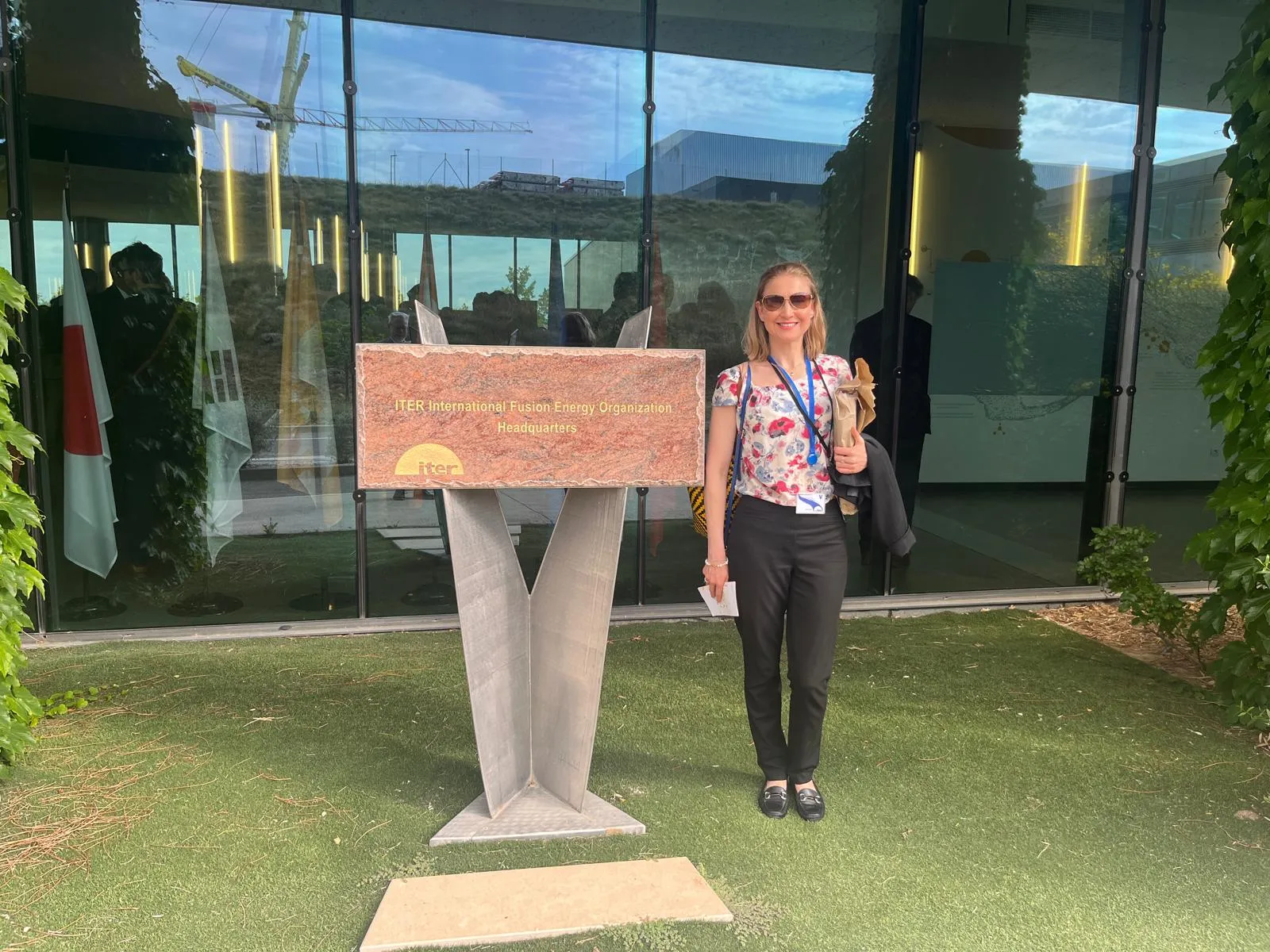
Melanie Windridge at ITER HQ
Here are three insights from the workshop.
1. ITER is opening its doors wide for knowledge transfer with the private sector
Conceived a year and a half ago during a conversation in Washington between ITER Director General Pietro Barabaschi and Fusion Industry Association CEO Andrew Holland, this event brought together ITER and private fusion companies to see how ITER could begin to help them progress their own fusion device designs.
ITER is an international project comprising 35 nations collaborating to build the world's largest tokamak, a magnetic fusion device that has been designed to prove the feasibility of fusion. As such, organisation and management is complicated [read our insights from a Q&A session on ITER and building a fusion supply chain] and the project has already faced numerous delays.
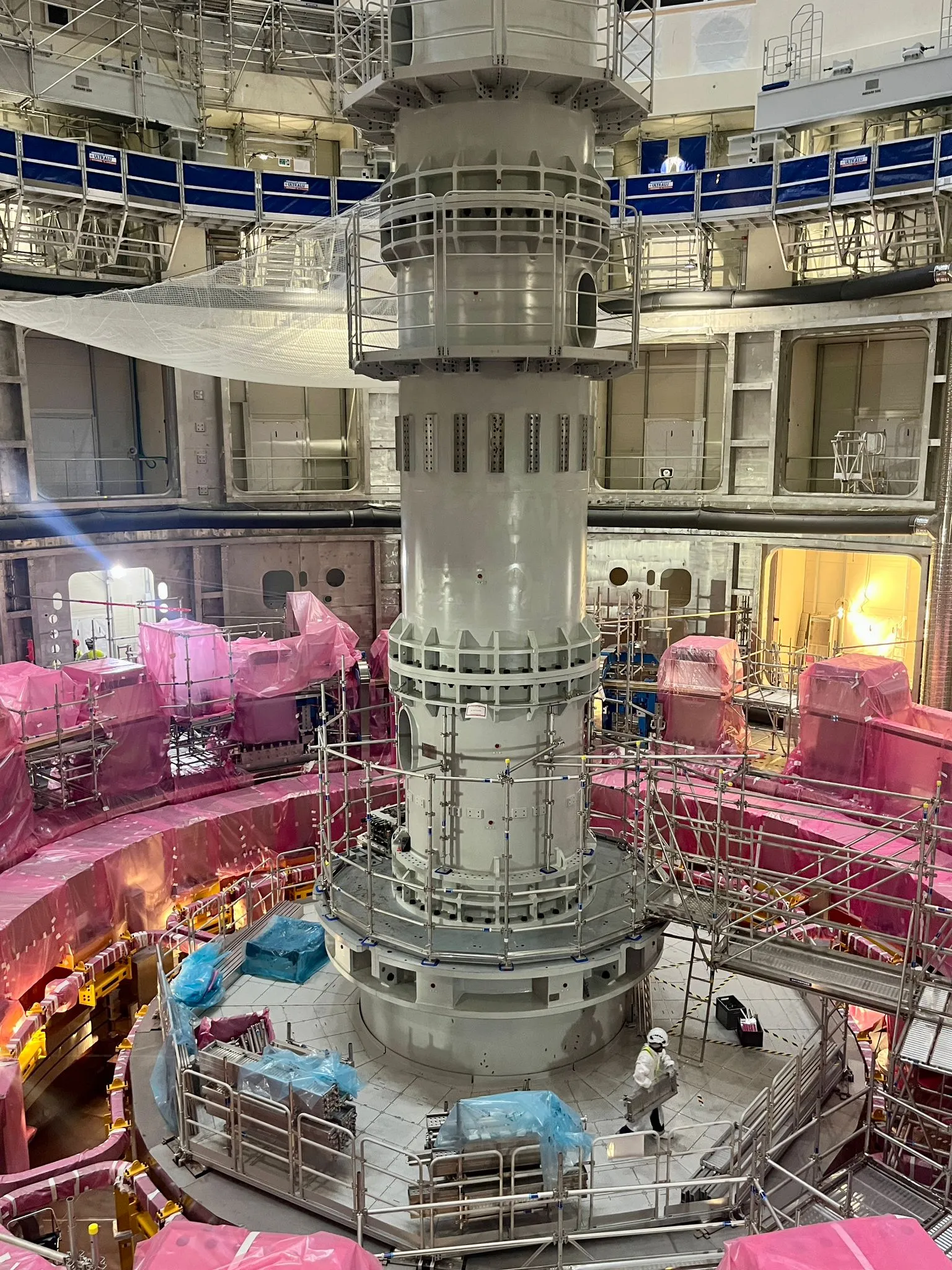
ITER under construction
Since Pietro Barabaschi took up his position as new Director General at the end of 2022, ITER has been doing ‘rebaselining’ work, looking at the ITER plans, costs and timescales. We don’t know yet the extent, but we know that there will be further delays announced, pushing back the start of useful experimental operations.
Meanwhile, in recent years private companies have been making strides in power plant design, construction of experimental facilities and development of industrial partnerships. There is a huge amount of knowledge and value at ITER that has been built up over decades that could help them now, well before ITER starts operations.
The overview of the workshop on the ITER website outlined their reasoning: “The surge in private sector fusion initiatives has driven a reconsideration of how we could optimize public-private engagement. The question is how we can better disseminate the accumulated knowledge and lessons learned through years of design, manufacturing, and assembly.”
After two days of presentations and panel discussions there followed a day of worksite tours and informal “deep-dive” discussions with ITER specialists on the following topics:
- Assembly and tooling
- Metrology
- 4D visualization
- Remote handling
- Diagnostics
- Logistics and transport
- Materials
- Vacuum Vessel manufacturing and assembly
- Magnet design, manufacturing, and assembly
- Electron cyclotron radiofrequency heating
- Ion cyclotron radiofrequency heating
- Neutral beam heating
- Thermal shield fabrication and assembly
- Safety demonstration (regulatory oversight, licensing)
- Waste management
- Insurance and other legal issues
- Quality assurance
- Reactive power compensation (pulsed power supply)
- Cryogenics
- Blanket
- Divertor
- Tritium breeding and extraction
Pietro Barabaschi is keen to transmit not just “know how,” but also “know how not”—the lessons they have learned about what not to do, which is something that is rarely published in scientific literature.
At the end of the meeting, Barabaschi commented that “fusion is driven by people who want to make a difference in the world, and it shows that we can make a difference if we work together.”
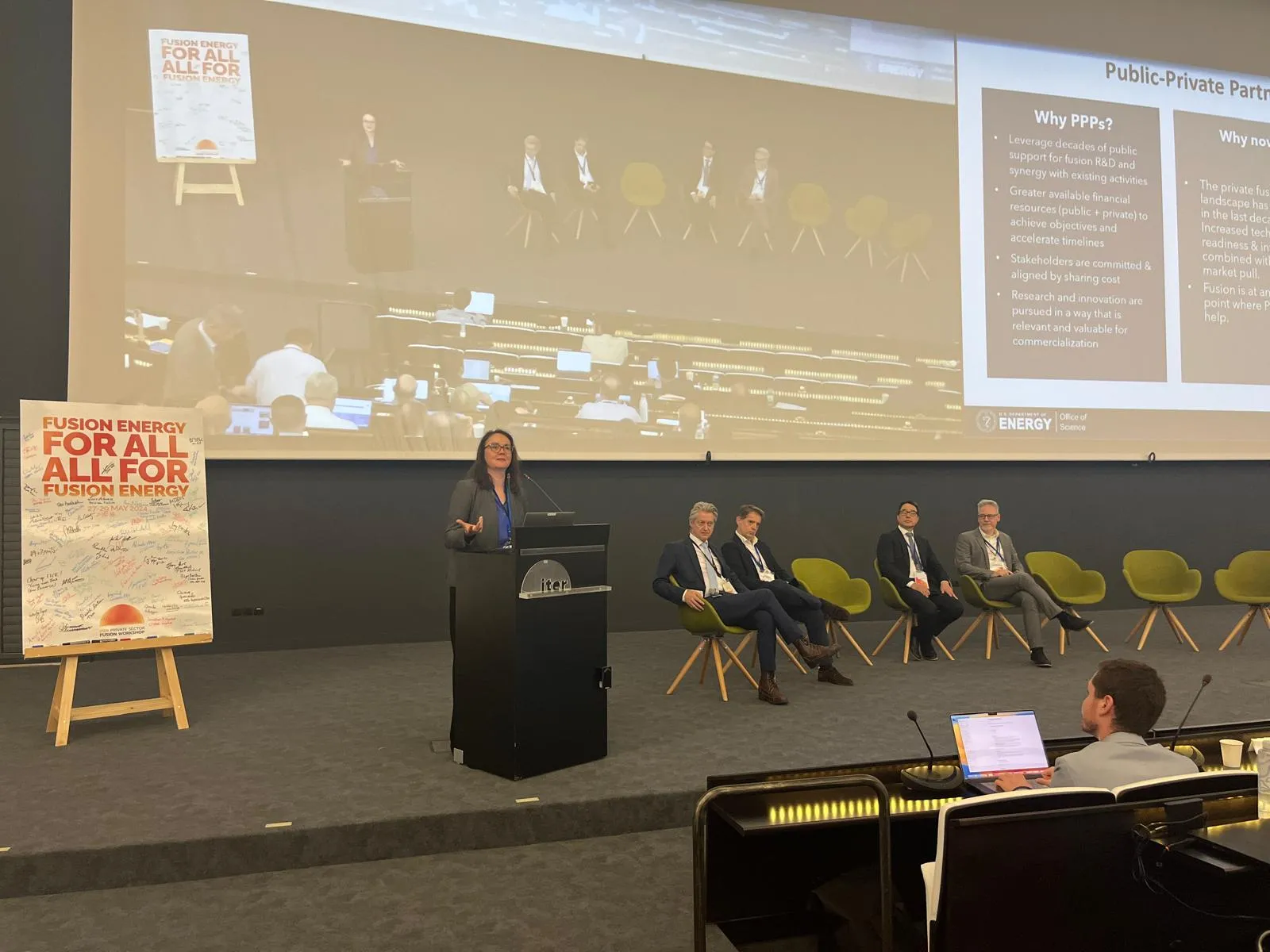
Colleen Nehl of US DoE talking about the public/private partnerships
2. Knowledge transfer mechanisms are being discussed in order to disseminate learnings and information
We don’t know yet what this will look like.
After the meeting, ITER staff will send a survey to participants asking for their thoughts on the “what” and the “how” of knowledge transfer—what do private fusion companies really need to know and how to make sure they get it.
ITER staff will compile a list from the responses and then ask the respondents to prioritise the items. Then work will begin on delivery, and some elements will be easier (or less bureaucratic) to deliver than others.
Laban Coblentz, Head of Communications at ITER, says: “The private company representatives have demonstrated eloquently to the ITER team the scope and extent of their appetite for collaboration. We have a daunting task ahead—to build an effective program for sharing knowledge—but they have provided the blueprint.”
Andrew Holland, CEO of the Fusion Industry Association said that he was pleased to come to Cadarache and participate in the first formal engagement between ITER and the investor-backed private fusion community. “Since its beginning,” he said, “the Fusion Industry Association has worked to build public private partnerships in order to gain access to the knowledge base of the national fusion energy research programs. ITER is at the center of those programs, so it is important that they have signalled a new openness to partnering with private sector fusion companies. This week’s workshop showcased a lot of excitement and mutual interest. Now we have to work to turn that excitement into the actual policies and programs that will enable a real partnership. I’m optimistic about the pathway forward.”
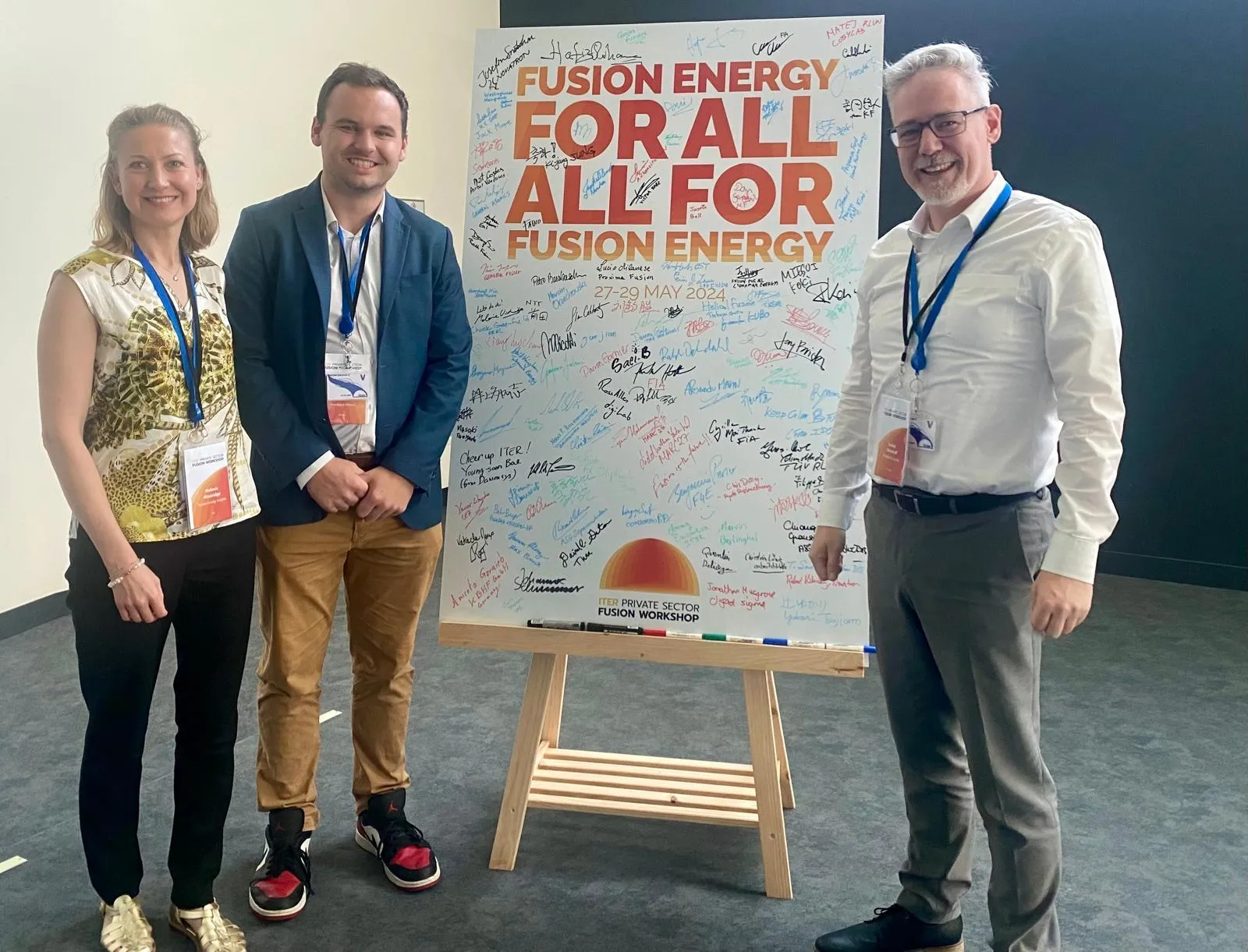
Melanie with Simon Woodruff and Jack Moore
3. The unexpected level of interest signals the keenness of the private sector to engage with ITER and the collective desire to drive fusion forward (at pace)
The event turned out larger than initially expected. Pietro Barabaschi admitted to being surprised by the uptake of the ITER invitation to the private sector.
Over 350 people attended from around the world, including representation from 30 private fusion companies, numerous supply chain companies, universities, research institutes and public labs, investors, governments, NGOs and the IAEA.
This packed meeting showed the keenness of the private sector to engage with ITER. Contrary to the regular media narrative of “us and them” when reporting on fusion activities in the public and private sectors, at this workshop there was a real feeling of shared commitment.
Hannes Vogel, Public Policy and Partnerships Lead at Proxima Fusion, told us: "We warmly welcome ITER's commitment to open engagement with startups, which perfectly complements our mission at Proxima: bringing fusion to the grid by combining the excellence of public research with the speed of a private startup. In-depth conversations with ITER's leading experts were a great first step. We discussed everything from physics and engineering to siting, regulatory approval, and recruiting top talent."
Fusion suppliers also benefitted from the coming together of the public and private fusion sectors.
Wolfgang Walter, Technical Manager from Bilfinger, gave his personal view on why he attended the workshop: “Bilfinger is a leading supplier of components for fusion research projects and also for nuclear fission power plants. It‘s only natural to extend this business to future fusion power plants, now. I‘ve therefore attended the meeting to get a compact update from the various start-up companies and to have direct conversations with decision makers from fusion companies, suppliers, research and politics. The fact that this was a compact 2-3 day event with a well curated content with enough time to do networking were key for me to attend. Thanks a lot to the ITER team for their great job to achieve this. Hope they will keep this compact workshop format for the future.”
And Delphine Roma, VP Big Science, Space & Defence Markets at Air Liquide, commented: "Air Liquide is proud to be a partner of ITER with our advanced helium and nitrogen cryogenic system (the largest ever built!) to keep the magnets at a temperature of 4K. This workshop was a good opportunity to bring together all key private and public actors of fusion and reflect together on international collaboration and ITER."
Disseminating the knowledge and learnings from ITER will take time, but this event clearly demonstrated that the private sector has appetite to learn.
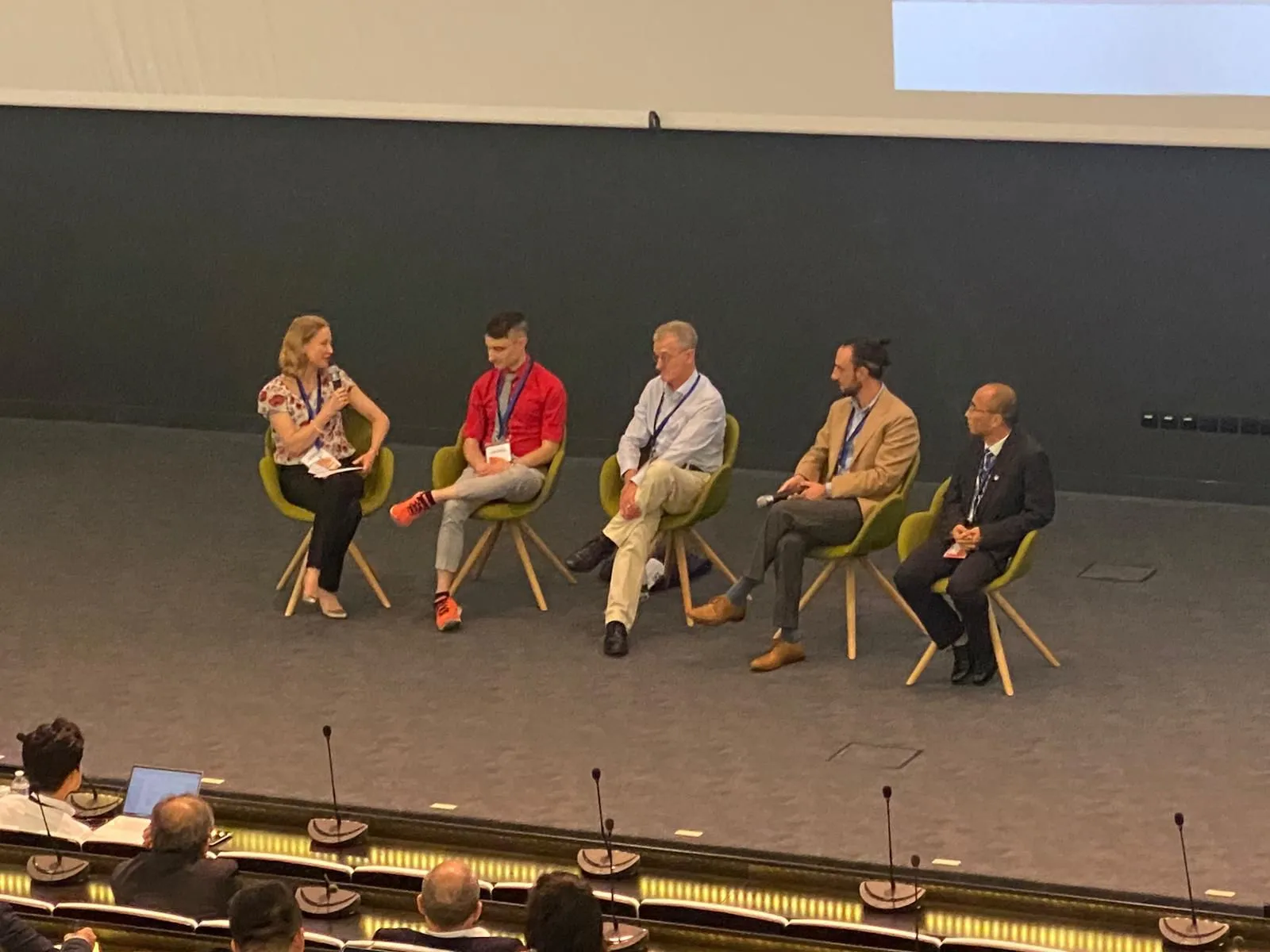
Melanie moderating the Tokamak panel with scientists from CFS, Tokamak Energy, General Atomics and ENN
And finally…..
Simon Woodruff, founder and CEO of numerous fusion-supporting companies (including our Fusion Advisory Services) said: “While there is one goal of the practical realization of fusion energy, there are many approaches. We are all engaged with fusion in the way that makes the most sense to us. No matter what approach: it is hard! It is taking all the creativity, innovation and persistence that a community of scientists, engineers and industrialists can muster. However the realization of fusion energy is worthwhile, utterly compelling, and we stand a better chance of succeeding sooner if we do it together.”
